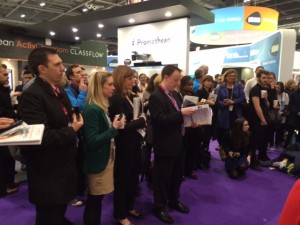
Creating an education news story that will attract the attention of journalists, bloggers and tweeters can feel like an impossible task. But it’s actually about getting three things right.
1. What is new?
Any education story needs to be something that’s genuinely new, something that’s not been reported previously.
There are thousands of possibilities, both large and small, but the story has to be new. Research that shows more parents are considering sending their children to independent schools, a new technology that makes it easy to create a customised school timetable for every child, or the launch of the first specialist university just for plumbers, all provide new information. However, the second university for plumbers, children sitting in classrooms or parents taking their children to school are all old news.
2. Why now?
Journalists are pitched hundreds of education stories so to get cut through it’s essential a story is timely. For example, there’s no point pitching a story about brilliant exam results in September. Journalists write about exam results in August and that’s when your news about great results is most timely. Equally a story about how children forget what they’ve learnt during the summer holidays will be of interest in July but not in November.
Always ask yourself the question “Why is my news story important now rather than next month?”
Why is it relevant?
Any journalist will know who their audience is. For many, online news means they can quickly see how their audience has reacted to an item. The media live and die by the number of people consuming their content so, understanding the audience a journalist wants to reach is essential to understand whether your news story is relevant to them.
Not all education news is relevant to every journalist that writes about education. National media correspondents need a story that has national relevance so a new resource, the launch of a competition or a technical story about assessment is unlikely to be of interest. Even within the education sector media stories need to be tailored to a particular sphere of interest whether that’s the Times Higher Education and universities, the TES and schools, or SecEd and secondary schools.
A new and timely story should be able to secure interest but it’s essential to understand which media will find it most relevant.
And finally
We’ve created a quick analysis of a story we created to promote QuickStart Computing, a CPD resource to support teachers with the computing curriculum.
What’s new?
QuickStart Computing was a brand new CPD resource produced by Computing At School.
Why now?
The computing curriculum had launched in Sept 2014. Education journalists were interested in how the new curriculum was being tackled in schools. QuickStart Computing was created in response to research and feedback that teachers were struggling to teach the new curriculum. The launch of QuickStart coincided with BETT when education journalists regularly focus on aspects of technology in schools. These factors made our story timely.
Why is it relevant?
We created a number of different stories that could appeal to different journalists and media.
These included new research we commissioned on the attitudes of teachers and young people to computing, stories about why CPD support was needed for the new curriculum, comment from leading computing experts and case studies from teachers who could offer a classroom perspective.
Read more about the QuickStart campaign.
Get free education marketing tips and advice
Our go-to email resources are for anyone looking to reach an education sector audience. Get inspiration and practical help on everything from pitching your story to journalists, to engaging influencers to spread the word, to securing TV coverage.
